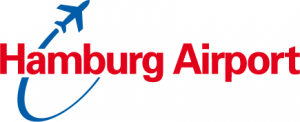Hamburg Airport launches new IT system, “HAM SuITe”
Benefits for airport, airlines and passengers – “our central nervous system”
Hamburg Airport has successfully launched a new, pioneering IT system. “HAM SuITe” (Solution Unified Airport Information Technology) now provides close interconnectivity between partners such including airlines, German Air Traffic Services, ground handling service providers, Eurocontrol and Airport Coordination Germany. At the same time, it is the foundation for A-CDM (Airport Collaborative Decision Making), the internationally standardised concept for the optimisation of handling processes at airports. “We are proud of what he have achieved here – a future-proof IT platform for the airport which can be extended at any time. We have developed one of the world’s leading airport systems,” reports a delighted Dr Hannes Pfister, Director of Information Management at Hamburg Airport.
Over a period of three years, the airport has created a system that allows for better and faster data exchange with all partners involved in daily airport operations, including production planning, the Traffic Centre, Ramp Control, General Aviation Terminal and German Air Traffic Services. “We have invested in the future – in a system that offers multiple advantages for the airport, for the approximately 60 airlines operating here, and for passengers,” says Johannes Scharnberg, Director of Aviation. “It enables us to make more precise predictions relating to the traffic situation to better exploit the available resources, minimise delays and make everything more foreseeable for all participants.” The introduction of HAM SuITe will transform existing work processes. “Many work and monitoring steps currently carried out manually will be automated and/or simplified, and we will now receive binding commitments from the airlines as to when aircraft will actually be ready to take-off, which will better enable us to plan,” continues Johannes Scharnberg.
Airport personnel also benefit from HAM SuITe. A lot of data that, until now, had to be entered manually or repeatedly confirmed will now be updated automatically in real time. “Without any intervention whatsoever, all parties can now watch as the data continously updates,” explains Dr Pfister. “The HAM SuITe source code consists of around 360,000 lines – the equivalent of around 9,000 pages of text. The system is built on a modern three-layer architecture. In the future, this will make it possible to implement changes to requirements quickly and with a minimum of effort. All user interfaces can be opened using a web browser, and a person-based authorisation concept ensures that only trained personnel may edit data. It is, in effect, our central nervous system.”
Potential schedule adjustments are being displayed even earlier now
HAM SuITe communicates with more than 50 other IT systems. It was important to ensure here that existing systems, wherever possible, do not need to be changed at all; they are integrated in a backwards compatible way. At the same time, when new systems are added, they will be supplied with data using the latest technology. An Enterprise Service Bus has been implemented for both approaches, addressing amongst other things the monitoring of data flows.
As an example: If an airline can foresee that a particular flight will not be ready to depart at the time scheduled, it registers the delay directly in the database, thereby also informing all process participants. This means that the personnel originally reserved for handling this flight can now handle another flight in the intervening time. “Our goal is to plan, together, more reliably and more transparently,” says Johannes Scharnberg. “Possible deviations from the timetable will be apparent earlier for all affected working areas.”
Milestone of digital transformation of the airport
Other systems also connected include baggage control, the displays in the terminals and even the boarding pass readers at the security checkpoint. “We have achieved a new milestone in the digitalisation of our airport,” says Johannes Scharnberg with satisfaction. A further technical advantage: the system is usable via the web and therefore accessible worldwide. At the same time, it incorporates the very latest security technology. HAM SuITe can be individually configured at the different workplaces, only providing the functionality that is needed.


